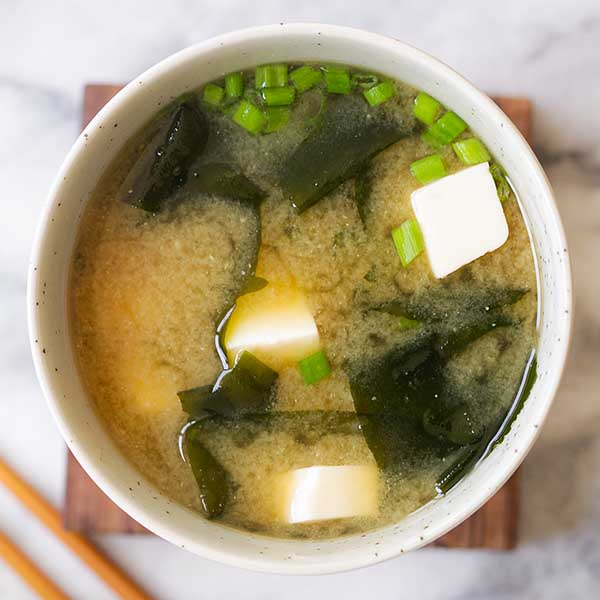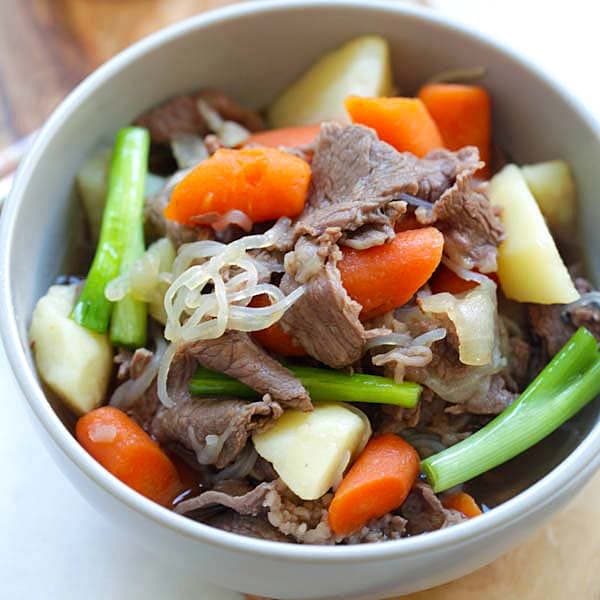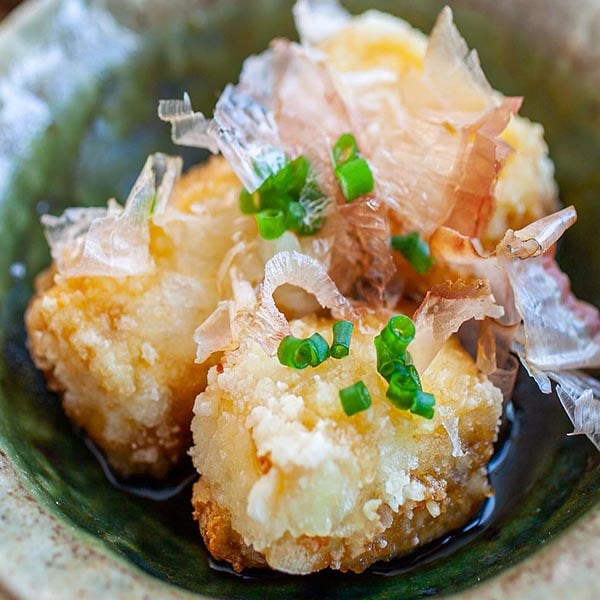This post may contain affiliate links. Please read my privacy policy.
Karaage or chicken karaage is a Japanese fried chicken dish. This homemade karaage recipe is easy, delicious with simple ingredients. The end results are juicy and crispy chicken that tastes just like Japanese restaurants!

What Is Karaage
Karaage (唐揚げ) is Japanese fried chicken where small bite-sized pieces of chicken are marinated and then deep-fried to crispy perfection.
Karaage is a very popular item at Japanese restaurants here in the US. It’s often served as an appetizer or as part of a Japanese combo or bento meal, it’s also called sesame fried chicken.
In many Asian countries especially Taiwan, a similar street snack called is Taiwanese salt and pepper chicken.
How To Make Karaage

- Use chicken thighs or chicken legs for the best chicken karaage. Cut the chicken into bite-sized pieces.
- Marinate the chicken with soy sauce, Japanese cooking sake, ginger, garlic and sesame oil for as little as 15 minutes.
- Coat each piece of the chicken generously with potato starch or corn starch.
- Deep fry the chicken. They should be brown on the outside but the meat should be juicy and bursting with flavors.
The Secret To Good Karaage

For the best karaage recipe, you should marinate the chicken for at least 2 hours or best overnight so the flavors seep inside the chicken meat.
Serve the chicken with mayonnaise and lemon wedges. Squeeze the lemon juice on top of the karaage and dip it with the mayonnaise.
Frequently Asked Questions
This recipe is only 361 calories per serving.

What To Serve With Chicken Karaage
For a wholesome meal and easy weeknight dinner, I recommend the following recipes.
I hope you enjoy this post as much as I do. If you try my recipe, please leave a comment and consider giving it a 5-star rating. For more easy and delicious recipes, explore my Recipe Index, and stay updated by subscribing to my newsletter and following me on Facebook, Pinterest, and Instagram for new updates.
Other Japanese Deep Frying Recipes


Chicken Karaage (Sesame Fried Chicken)
Ingredients
- 1 pound (500g) boneless and skinless chicken breasts, or thighs, cut into cubes
- 6 tablespoons Japanese cooking sake
- 3 tablespoons soy sauce
- 3 inches (7cm) fresh ginger, peeled and pounded with a mortar and pestle to extract 2 tablespoons ginger juice
- 1 teaspoon sesame oil
- cornstarch
- oil, for deep frying
Instructions
- Use paper towels to pat the chicken dry and transfer it to a bowl. Add the sake, soy sauce, ginger juice, and sesame oil, and marinate for 30 minutes (or up to 2 hours for best results). Remove the chicken pieces from the marinade and coat them evenly with cornstarch in a plastic bag, such as a Ziplock. Shake off the excess cornstarch.
- Heat a wok or pot of cooking oil. When the oil is hot enough for frying (350°F – 375°F or 176°C – 190°C), carefully drop in the chicken and quickly deep fry until the pieces float. Transfer the chicken to a plate and let it rest for a couple of minutes.
- Return the chicken to the oil and deep-fry again until golden brown and crunchy. Transfer to a plate or bowl lined with paper towels to absorb excess oil. Serve hot with a slice of lemon and mayonnaise.
Nutrition
Nutrition information is automatically calculated, so should only be used as an approximation.










My comment is about something similar but I don’t know where to send it. It’s Pauline’s 5 Spice Chicken.